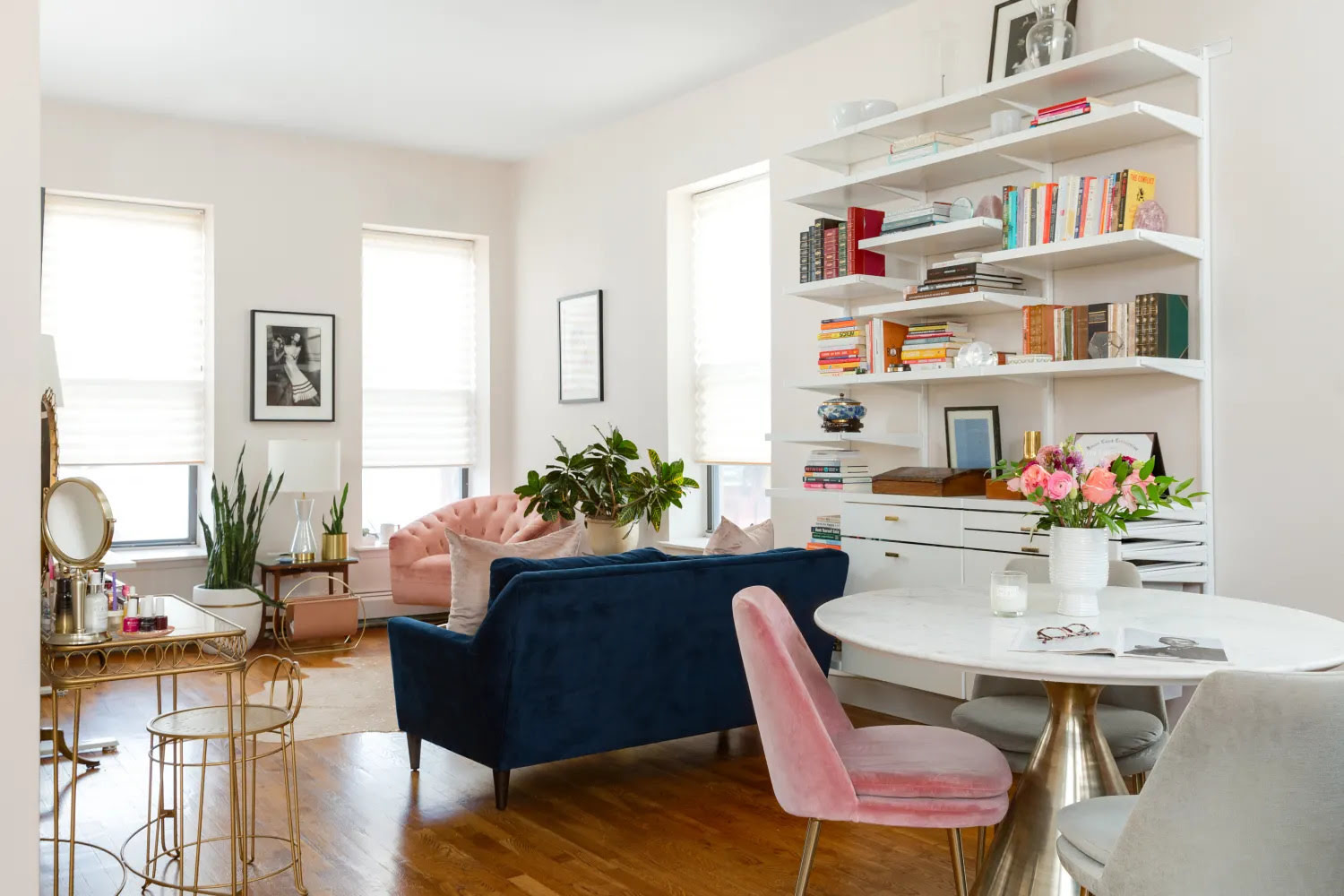

Articles
Where To Place Bookshelf In Living Room
Modified: March 20, 2024
Looking for tips on where to place a bookshelf in your living room? Check out our articles for ideas and inspiration.
(Many of the links in this article redirect to a specific reviewed product. Your purchase of these products through affiliate links helps to generate commission for Storables.com, at no extra cost. Learn more)
Introduction
A bookshelf is more than just a storage unit for books; it can also be a stylish and functional addition to your living room. Placing a bookshelf in the right location can not only enhance the aesthetics of your space, but also provide easy access to your favorite reads and display items. However, finding the perfect spot for your bookshelf can be a daunting task.
Before diving into the various placement options, there are several factors to consider. These factors include the size and style of your bookshelf, the layout of your living room, the flow of foot traffic, and the overall design theme you want to achieve. By taking these factors into account, you can ensure that your bookshelf becomes a focal point and seamlessly integrates into your living room.
In this article, we will explore different placement options for bookshelves in the living room and discuss their pros and cons. Whether you have a spacious living room or a small apartment, there are placement ideas that can work for you. So let’s dive in and discover the best placement options for your bookshelf!
Key Takeaways:
- Strategic placement, artistic arrangement, and proper lighting can transform a bookshelf into the focal point of a living room, adding character and style while showcasing personal interests and creating a cozy reading nook.
- Consider factors like available space, foot traffic, and design theme when deciding where to place a bookshelf in the living room. Explore common placement options such as against a wall, in a corner, near windows, or as a room divider to enhance functionality and aesthetics.
Read more: Where To Place A Mirror In The Living Room
Factors to Consider Before Placing a Bookshelf
Before deciding where to place your bookshelf in the living room, it’s important to consider a few key factors. These factors will help you determine the most suitable location that meets your functional and design needs. Let’s take a closer look at these factors:
- Available Space: Assess the available space in your living room. Consider the dimensions and layout of the room to determine whether you have enough space for a freestanding bookshelf or if you need to opt for a wall-mounted or built-in option.
- Foot Traffic: Take into account the flow of foot traffic in your living room. You don’t want to obstruct pathways or create obstacles with your bookshelf. Consider placing it in an area where it won’t impede the natural movement within the room.
- Lighting: Evaluate the lighting conditions in the living room. Natural light can enhance the overall ambiance and make your bookshelf more visually appealing. Consider placing the bookshelf near windows or incorporating built-in lighting to highlight your books and decor.
- Design Theme: Take note of the design theme or style of your living room. Ensure that the bookshelf aligns with the overall aesthetic and complements the existing furniture and decor. Whether your living room has a modern, minimalist, or eclectic theme, choose a bookshelf that harmonizes with the overall look.
- Accessibility: Consider the accessibility of your books and other items on the shelves. If you frequently use your books, opt for a location that is within easy reach. However, if you are more focused on aesthetics and display, you can showcase your collection in a slightly more elevated or decorative area.
- Functionality: Determine the purpose and function of your bookshelf. Are you primarily using it for storing books or displaying decorative items? Based on your intended use, choose a location that best serves that purpose. For example, if you want to showcase your favorite novels, consider placing the bookshelf in a prominent area, such as near the seating area or as a room divider.
By considering these factors, you can make an informed decision and find the ideal placement for your bookshelf in the living room. Remember, the goal is to strike a balance between functionality and aesthetics to create a cohesive and inviting space.
Common Placement Options for Bookshelves in the Living Room
When it comes to placing a bookshelf in your living room, there are several common options to consider. Each placement option offers its own unique advantages and considerations. Let’s explore some of the most popular choices:
Against a Wall
One of the most classic and straightforward options is placing your bookshelf against a wall. This placement allows for easy accessibility and creates a focal point for your books and decor. Placing the bookshelf against a wall also helps to maximize space in the room, leaving the center area free for seating or other furniture arrangements. However, it’s important to consider the size and height of the bookshelf to ensure it fits well and complements the overall layout of the living room.
In a Corner
Another popular option is placing the bookshelf in a corner of the living room. This placement utilizes the often-unused space in corners and helps to optimize the room’s layout. A corner bookshelf can add visual interest and depth to the space, creating a cozy reading nook or display area. However, it’s important to consider the size and shape of the corner to ensure it can accommodate the bookshelf properly without overwhelming the room.
Read more: Where To Place A Rug In A Living Room
As a Room Divider
For larger living rooms or open-concept spaces, using a bookshelf as a room divider can be an excellent option. This placement not only creates designated zones within the room but also adds architectural interest and depth. A bookshelf acting as a room divider can provide storage and display space on both sides, serving as a functional and visually appealing element in your living room. However, it’s important to choose a bookshelf that complements the overall design and balances the visual weight of the room.
Near Windows
If you have windows in your living room, consider placing your bookshelf near them. This placement takes advantage of natural light, which can enhance the visibility and display of your books and decor. Placing the bookshelf near windows also creates an inviting and cozy reading corner, where you can enjoy natural light while immersing yourself in a good book. However, it’s crucial to consider the impact of direct sunlight on your books and take measures to prevent fading or damage.
Remember, these are just a few common placement options for bookshelves in the living room. Explore these options, mix and match, and adapt them to suit your specific needs and preferences. The goal is to find a placement that enhances the functionality and aesthetics of your living room while showcasing your books and personal style.
Pros and Cons of Placing a Bookshelf Against a Wall
Placing a bookshelf against a wall in your living room is a popular and practical choice. This placement option offers several advantages and considerations that you should keep in mind. Let’s explore the pros and cons:
Pros:
- Optimal Space Utilization: When you place a bookshelf against a wall, you make efficient use of the available space in your living room. This placement allows you to maximize storage and display space without encroaching on the main area of the room.
- Focal Point and Visual Appeal: A bookshelf against a wall instantly becomes a focal point in the living room. You can arrange your books and decor in an aesthetically pleasing manner, creating an attractive visual display. This placement option allows you to showcase your collection and add character to the room.
- Easy Accessibility: Placing the bookshelf against a wall ensures that your books and items are easily accessible. You can organize the shelves based on your preference, making it convenient for you to find and retrieve your favorite reads whenever you want.
- Flexibility in Styling: With a bookshelf against a wall, you have the freedom to experiment with different styling options. You can play with the arrangement of books, incorporate decorative items, and even add additional storage solutions such as baskets or bins on the shelves.
Read more: Where To Place A Clock In Living Room
Cons:
- Space Limitation: Placing a bookshelf against a wall may limit the available space in your living room, especially if you have a smaller area. It’s essential to carefully measure the dimensions of your bookshelf and ensure that it fits well without overwhelming the room.
- Visual Imbalance: Depending on the size and design of your bookshelf, placing it against a wall can create a visual imbalance in the room. It’s important to choose a bookshelf that matches the scale of the room and complements the overall aesthetic to maintain visual harmony.
- Wall Damage: When positioning a bookshelf against a wall, there is a risk of causing damage to the wall surface. The weight of the shelves, books, and other items can put pressure on the wall, leading to scratches, dents, or even holes. It’s advisable to use wall anchors or brackets for added stability and prevent damage.
- Limitation in Room Layout: Placing a bookshelf against a wall can limit your options for arranging furniture in the living room. You need to consider the layout to ensure that the placement of the bookshelf doesn’t hinder traffic flow or disrupt the overall functionality of the space.
When considering placing a bookshelf against a wall in your living room, weigh the pros and cons to determine if it aligns with your needs and preferences. Assess the available space, consider the overall design, and envision how the placement will impact the functionality and visual appeal of the room. By carefully considering these factors, you can make an informed decision that enhances your living room and showcases your books in the best possible way.
Advantages and Disadvantages of Placing a Bookshelf in a Corner
Placing a bookshelf in a corner of your living room is a creative and space-saving option. This placement offers its own set of advantages and considerations that you should take into account. Let’s explore the advantages and disadvantages of placing a bookshelf in a corner:
Advantages:
- Utilization of Unused Space: Placing a bookshelf in a corner makes efficient use of often-unused space in your living room. Corner placement allows you to maximize storage and display space while optimizing the layout of the room.
- Enhanced Visual Appeal: A bookshelf in a corner can add visual interest and depth to your living room. It serves as an architectural element that draws attention and breaks the monotony of flat walls. You can arrange your books and decor creatively to create an attractive display.
- Space Efficiency: By utilizing a corner, you open up more floor space in your living room. This can be especially beneficial in smaller living rooms, as it allows for better traffic flow and offers more room for additional furniture or seating arrangements.
- Cozy Nook: Placing a bookshelf in a corner can create a cozy reading nook or a dedicated space for relaxation. By adding a comfortable chair or a small seating area adjacent to the bookshelf, you can transform the corner into a perfect spot to curl up with a book.
Disadvantages:
- Challenging Accessibility: Placing a bookshelf in a corner can make it challenging to access books and items stored in the corner shelves. You may have to reach over or around furniture or decor to retrieve books, which can be less convenient compared to shelves positioned against a wall.
- Fit and Size Consideration: It’s important to consider the size and dimensions of the corner when choosing a bookshelf. Some corners might be too small or oddly shaped to accommodate certain types of bookshelves. It’s crucial to measure the available corner space and choose an appropriately sized bookshelf that fits well without overwhelming the room.
- Potential for Visual Imbalance: Depending on the layout and design of your living room, placing a bookshelf in a corner can create visual imbalance if not carefully considered. The placement should complement the overall aesthetic of the room and maintain a sense of balance and harmony.
- Obstructed Views and Natural Light: Placing a bookshelf in a corner can obstruct views from certain angles and potentially block natural light if positioned near windows. If maintaining unobstructed views or maximizing natural light is a priority for you, consider alternative placement options for your bookshelf.
When considering placing a bookshelf in a corner of your living room, evaluate the advantages and disadvantages to determine if it aligns with your needs and the overall design of the space. Consider the available space, the accessibility of the shelves, and the visual impact on the room. With careful consideration, you can transform a corner into a functional and visually appealing area to showcase your book collection.
Read more: Where Should A TV Be Placed In A Living Room
The Benefits and Drawbacks of Positioning a Bookshelf as a Room Divider
Positioning a bookshelf as a room divider in your living room is a creative and multifunctional choice. This placement option offers a range of benefits and drawbacks that you should consider. Let’s explore the advantages and disadvantages of using a bookshelf as a room divider:
Benefits:
- Defined Zones: Placing a bookshelf as a room divider helps to create designated zones within your living room. It can effectively separate different areas, such as a reading area, a TV area, or a dining space, without the need for walls or permanent partitions.
- Added Storage and Display Space: Using a bookshelf as a room divider provides additional storage and display space. You can utilize both sides of the bookshelf to showcase your book collection, decorative items, or even incorporate baskets or boxes for hidden storage.
- Architectural Interest: A bookshelf acting as a room divider adds architectural interest and depth to the living room. It becomes a focal point that draws attention and enhances the visual appeal of the space. You can choose a bookshelf with an eye-catching design to make a statement.
- Improved Privacy: Placing a bookshelf as a room divider can offer a certain level of privacy within the living room. It can create a visual barrier between different areas, making each space feel more intimate and secluded.
Drawbacks:
- Restricted Flexibility: Positioning a bookshelf as a room divider can limit the flexibility in arranging furniture. You may have to consider the placement of other items in relation to the bookshelf, making it a bit more challenging to change the layout or reposition furniture later on.
- Visual Weight: Depending on the size and design of the bookshelf, using it as a room divider can create a significant visual weight in the living room. It’s important to choose a bookshelf that suits the scale of the room and complements the overall aesthetics, ensuring that it doesn’t overpower or dominate the space.
- Reduced Natural Light: A bookshelf acting as a room divider can potentially block natural light from reaching certain areas of the living room. Consider the positioning of the bookshelf in relation to windows or other light sources to ensure that it doesn’t hinder the flow of light or create dark spots in the room.
- Accessibility: Placing a bookshelf as a room divider may impact the accessibility of books and items on the shelves. If you frequently use your books or decor, it’s important to arrange the shelves in a manner that allows for easy reach from both sides of the divider.
When considering using a bookshelf as a room divider in your living room, weigh the benefits and drawbacks to determine if it suits your needs and the overall layout of the space. Consider the size and style of the bookshelf, the flexibility of furniture placement, the impact on natural light, and the access to items on the shelves. With careful consideration, you can create a functional and visually appealing division in your living room using a bookshelf as a room divider.
Ideas for Placing Bookshelves Near Windows
Placing bookshelves near windows in your living room offers a unique opportunity to combine functionality and aesthetics. It allows you to take advantage of natural light while creating a visually appealing and cozy reading area. Here are some ideas for placing bookshelves near windows:
Read more: Where To Place Accent Chairs In Living Room
1. Window Nook:
Create a cozy reading nook by placing a bookshelf adjacent to a window. Position a comfortable chair or a cushioned bench in the corner, between the bookshelf and the window. This arrangement allows you to enjoy natural light while immersing yourself in a good book. You can also add a small side table or a reading lamp to enhance the functionality of the nook.
2. Framing the Window:
Place two bookshelves on either side of a window to create a symmetrical and visually balanced look. This arrangement adds height and drama to your living room, framing the window and drawing attention to the natural light source. You can position decor items, potted plants, or artwork on top of the bookshelves to further enhance the visual appeal.
3. Floating Shelves:
If you have limited floor space or want to maintain an open and airy feel, opt for floating shelves near the windows. Install floating shelves directly above or adjacent to the windows to create a minimalist and modern look. This placement allows you to display your books and small decor items while still allowing ample natural light to filter into the room.
4. Window Ledge Extension:
Extend the window ledge by incorporating a bookshelf directly beneath it. This idea works well if you have low windowsills or if you want to make use of the space below a larger window. Choose a bookshelf that fits the width of the window and use it to display your book collection or for additional storage. You can also add seating, such as a bench or a cushion, for a cozy reading spot.
Read more: Where To Place Air Purifier In Living Room
5. Corner Bookshelf:
If your window is positioned in a corner, consider placing a corner bookshelf near the window. This design allows you to utilize the corner space effectively while taking advantage of natural light. A corner bookshelf can become a focal point, showcasing your books and adding depth to the room. Be sure to measure and choose a corner bookshelf that fits well in the available space.
When placing bookshelves near windows, consider the direction and intensity of the sunlight. Direct sunlight can cause books to fade, so it’s advisable to use curtains or blinds to protect your collection when necessary. Additionally, ensure that the bookshelves are securely anchored to prevent any accidents or damage.
By incorporating bookshelves near windows in your living room, you can create a harmonious blend of functionality, natural light, and visual appeal. Choose the placement option that suits your space, style, and needs to transform your living room into a cozy and inviting reading haven.
Creative Ways to Incorporate a Bookshelf into a TV Wall Unit
If you’re looking to combine functionality and style in your living room, incorporating a bookshelf into a TV wall unit can be an excellent solution. It allows you to create a seamless integration of your entertainment center and book storage. Here are some creative ways to incorporate a bookshelf into a TV wall unit:
1. Integrated Bookshelf:
Design a custom TV wall unit that includes built-in bookshelves on either side of the television. This design seamlessly merges the TV and book storage, creating a cohesive and organized look. You can have adjustable shelves to accommodate different book sizes and incorporate doors or drawers to hide away other items. This option works well if you want a streamlined and minimalist aesthetic.
2. Surrounding Shelves:
If you have a standalone TV or prefer a more open and airy look, consider installing floating shelves around the TV. Mount the TV on the wall and position floating shelves on either side or above the TV to create a symmetrical arrangement. Use these shelves to display your books and decorative items while leaving the area below the TV free for media consoles or storage units.
Read more: Where To Place Dining Table In Living Room
3. Book Nooks:
Add book nooks to your TV wall unit by incorporating small bookshelves on either side of the TV or at the corners. These book nooks can be smaller shelves or recessed alcoves specifically designed to hold books. This creative touch adds depth and visual interest to your TV wall unit while providing dedicated space for your book collection.
4. Vertical Bookcases:
Incorporate vertical bookcases on either side of the TV to create an eye-catching and unique design. Choose tall and narrow bookcases that complement the height of the TV. These vertical bookcases can serve as statement pieces, showcasing your books and adding a touch of architectural elegance to your living room.
5. Library Wall:
If you have a large living room or desire an expansive book storage solution, consider creating a library wall within your TV wall unit. Install full-wall bookshelves on either side of the TV to create a grand and sophisticated look. This setup provides ample space for your book collection and allows you to create a cozy reading area near the TV.
Whichever option you choose, remember to consider the size and weight of your TV and ensure that the bookshelves are sturdy and securely installed. Additionally, incorporate proper lighting to showcase your books and enhance the visual impact of the TV wall unit.
By creatively incorporating a bookshelf into your TV wall unit, you can transform your living room into a functional and aesthetically pleasing space. Not only will it provide storage for your books, but it will also serve as a stylish centerpiece for your entertainment area. Customize the design to suit your preferences and create a personalized focal point in your living room.
How to Make a Bookshelf the Focal Point of the Living Room
A bookshelf has the potential to be more than just a functional storage unit; it can also become the focal point of your living room, adding character and charm to the space. Here are some tips on how to make a bookshelf the focal point of your living room:
1. Strategic Placement:
Select a prominent location in your living room for the bookshelf. Consider placing it against a prominent wall or in a central area where it can easily catch the attention of anyone entering the room. Ensure that the bookshelf is positioned at eye level for maximum impact.
2. Color and Contrast:
Choose a bookshelf that stands out from the rest of the room by using a contrasting color or material. Opt for a bold and eye-catching hue that complements the overall color scheme of the living room. The contrast will draw attention to the bookshelf and make it a visually striking element.
3. Artistic Arrangement:
Arrange your books and decorative items on the shelves in an artistic and visually appealing manner. Experiment with different arrangements, such as organizing books by color, size, or genre. Create visual interest by incorporating decorative items, such as artwork, vases, or sculptural pieces, alongside the books. This arrangement adds a touch of personal style and makes the bookshelf captivating to look at.
4. Lighting:
Illuminate your bookshelf to make it stand out even more. Install built-in lighting or strategically position lamps on the shelves to highlight your books and decor. The soft glow of lighting not only enhances the visibility of the items on the bookshelf but also creates a warm and cozy ambiance in the living room.
Read more: Where To Place The Bed In A Room
5. Showcase Unique Items:
Incorporate unique and eye-catching items on your bookshelf to make it a conversation starter. Display treasures collected from your travels, family heirlooms, or interesting pieces that reflect your personal interests. These unique items will add depth and individuality to the bookshelf, making it a focal point that tells your story.
6. Statement Backdrop:
Add a statement backdrop to your bookshelf to make it visually captivating. Consider painting the wall behind the bookshelf in a contrasting color, using wallpaper with a bold pattern, or creating a focal wall with textured materials like reclaimed wood or stone. The backdrop will provide a striking backdrop for your books and draw attention to the bookshelf.
By following these tips, you can transform your bookshelf into the focal point of your living room. Whether it’s through strategic placement, artistic arrangement, or unique items, your bookshelf will become a visually appealing and engaging element that showcases your love for books and personal style.
Conclusion
Placing a bookshelf in your living room is not just about storage; it’s an opportunity to add style, functionality, and personality to your space. By considering the factors such as available space, foot traffic, lighting, design theme, accessibility, and functionality, you can make an informed decision on where to place your bookshelf.
There are various common placement options for bookshelves in the living room, each with its own set of advantages and considerations. Whether you choose to place it against a wall, in a corner, as a room divider, near windows, or incorporate it into a TV wall unit, each option can create a unique look and enhance the functionality of your living room.
Placing bookshelves against a wall allows for optimal space utilization, easy accessibility, and the potential to create a focal point. Placing them in a corner utilizes otherwise unused space and adds visual interest. Using a bookshelf as a room divider creates defined zones within your living room and provides additional storage and display space. Placing bookshelves near windows takes advantage of natural light, creates a cozy reading nook, and adds visual appeal. Incorporating a bookshelf into a TV wall unit seamlessly combines entertainment and book storage in a stylish way. Lastly, making a bookshelf the focal point of your living room involves strategic placement, color contrast, artistic arrangement, appropriate lighting, showcasing unique items, and adding a statement backdrop.
Remember, when placing your bookshelf, consider the practical aspects of accessibility and space, but also embrace the opportunity to showcase your personal style and create a visually captivating element in the room.
Ultimately, the placement of your bookshelf should be a reflection of your individual taste and how you envision your living room. With careful consideration and a creative approach, your bookshelf can become much more than just a storage unit; it can be a centerpiece that adds character, warmth, and a touch of literary charm to your living space.
Frequently Asked Questions about Where To Place Bookshelf In Living Room
Was this page helpful?
At Storables.com, we guarantee accurate and reliable information. Our content, validated by Expert Board Contributors, is crafted following stringent Editorial Policies. We're committed to providing you with well-researched, expert-backed insights for all your informational needs.
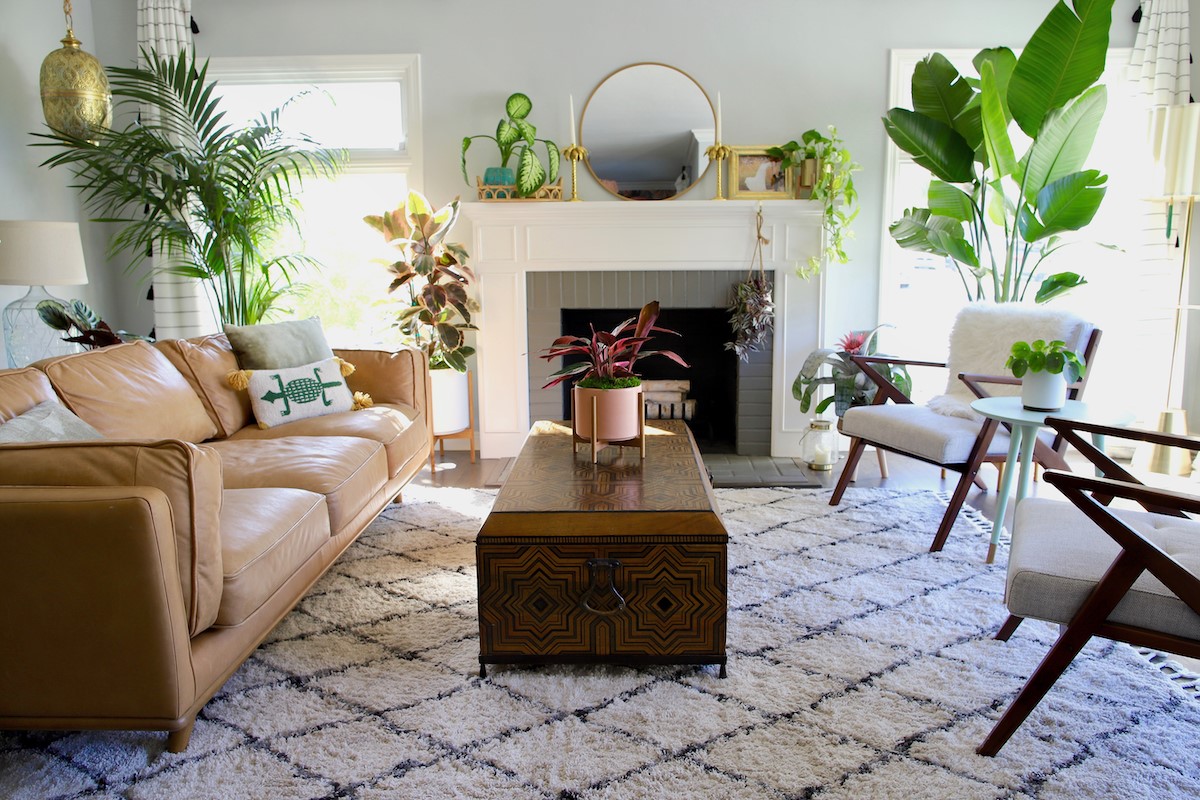
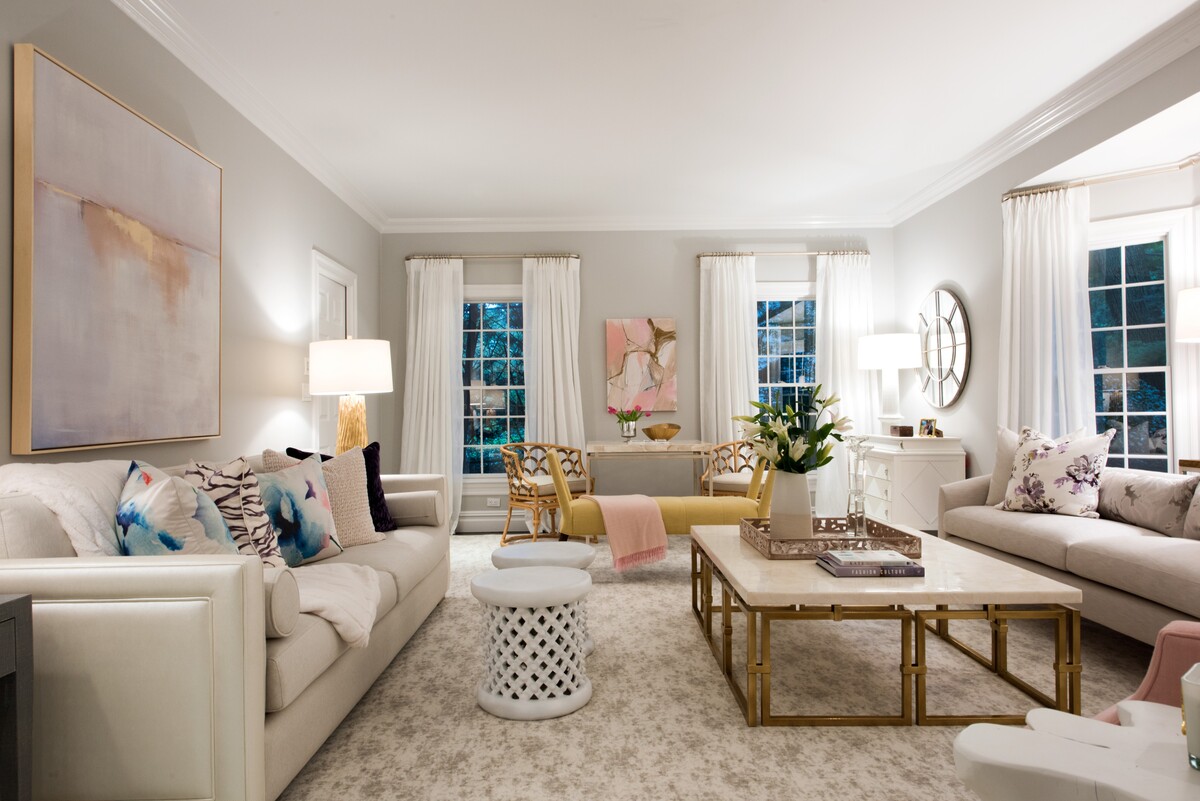
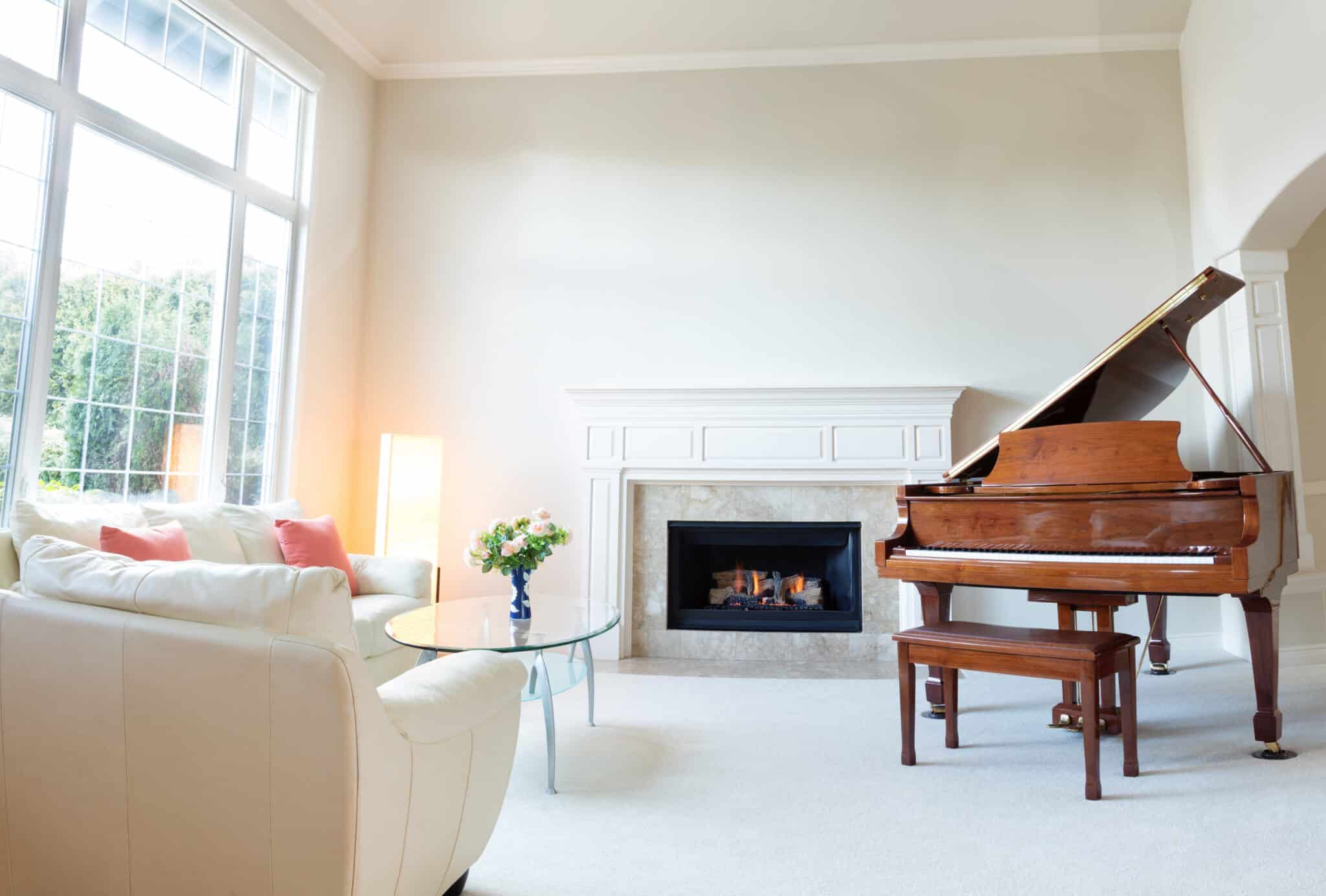
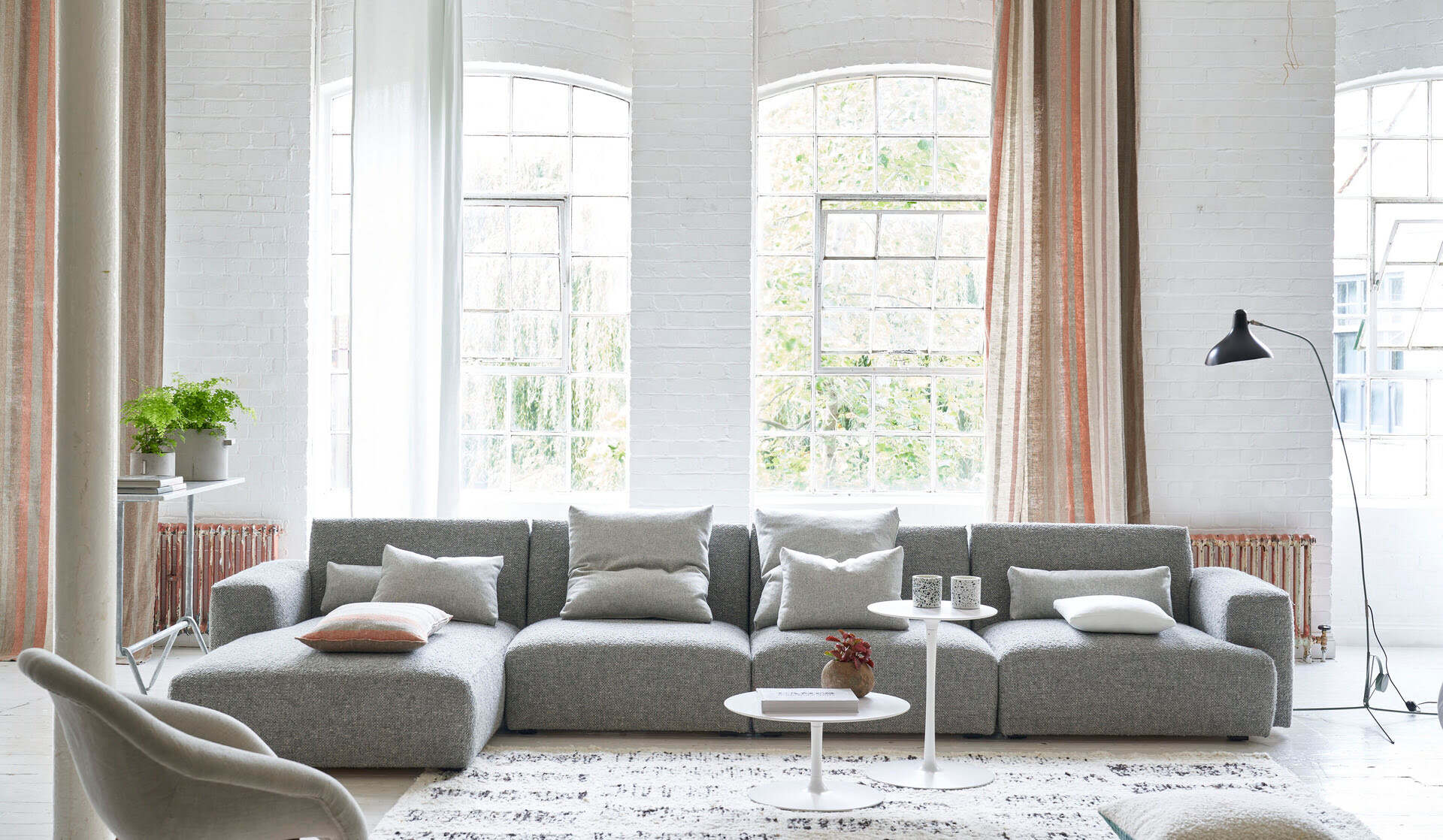

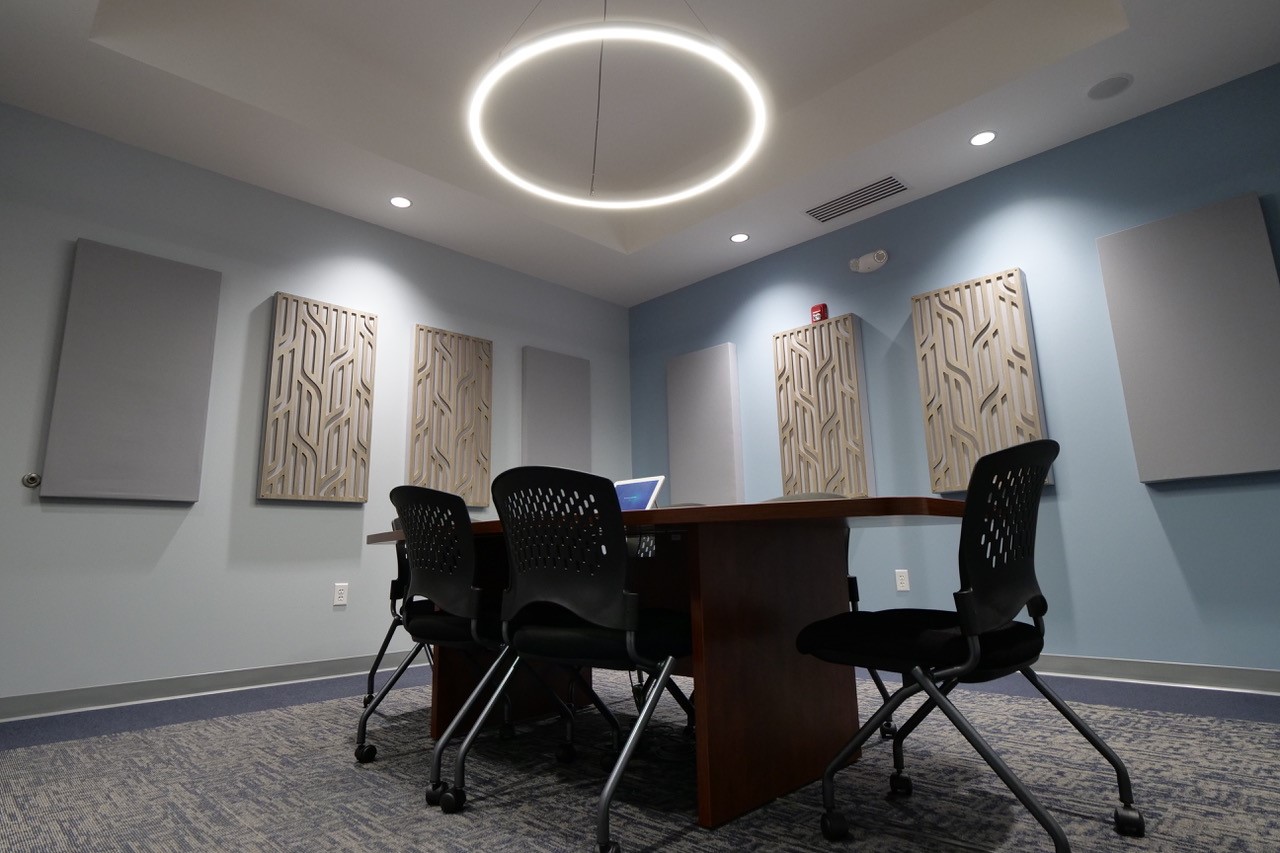


0 thoughts on “Where To Place Bookshelf In Living Room”